The history of the Panamericana Race, also called The Panamericana, The Pana or just The Race, holds some of the most epic and thrilling moments in the world of motor-sports. Right from the start in the middle of the last century (1950), the legendary Mexican car rally, has been testing the skill and valor of drivers, as well as the strength of their machines.
Alfred Neubauer, chief executive of the sporting division of Mercedes at the time, described The Panamericana as a combination of the 24 Hours of Le Mans, the Mille Miglia and the F1 Tripoli GP, together with the technical difficulties of the Nürburgring Circuit. Such was, and still is, the challenging nature of this competition, which for many represents the essence of all four-wheel contests.
With such credentials, The Panamericana Race soon became one of the most legendary of its kind, above the Italian Miglia and the Targa Florio. Considering all of the above it is only natural that only the greatest masters of speed have been able to succeed in this most challenging of motor-sports competitions.
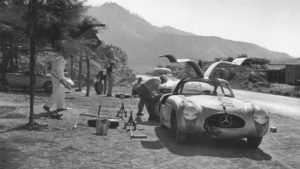
Attracted by such a pure and extreme challenge, the history of The Panamericana Race is full of F1 legends such as Juan Manuel Fangio, Jim Clark, Clay Regazzoni or Stefan Johansson. As for other contemporary celebrities outside the world of motor-sports, The Pana has had amongst its ranks stars such as David Gilmour and Nick Mayson, Pink Floyd’s drummer.
There are two different times in the history of The Panamericana Race: The old, or Golden Years and the Modern Times. During the first stage, between the years of 1950 and 1954, the race attracted some of the most important personalities from all modalities of motor-sports. In its modern or contemporary edition, which re-started again 1980, an effort is made to keep the spirit of those legendary years alive.
History of The Panamericana Race: Golden Age
The Panamericana Race is the dream come true of a Mexican motor-sports aficionado, Enrique Martín Moreno. Mr. Martín Moreno envisaged a grand sporting event as the perfect way of inaugurating the newly built stretch of the famous Panamerican Highway that cut his country in half.
The Mexican president at the time, Miguel Alemán Valdés, was sympathetic to his idea and authorised the event. The politician saw the race as a fantastic way of portraying a positive image of Mexico to the world as well as attracting tourism and foreign investment. This is how the dream of a The Panamericana Race, initially called the Mexican Road Race, became a reality.
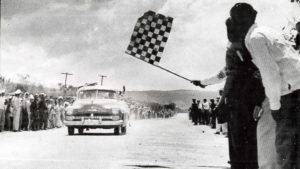
The circuit was then designed to comprise 3.200 km on public roads, which were divided into nine hellish stages over just six days. Obviously, the roads had to be closed off for the occasion.
The race started in Ciudad Juarez, a town in the border with the USA, to then go on to Chihuahua, Durango, Zacatecas, Jalisco, Guanajuato, Estado de México, Distrito Federal, Puebla, Oaxaca, and Chiapas, and finished at Cuautemoc city, on the border with Guatemala. In some editions the direction of the circuit has been reversed.
The first edition of La Pana took place from the 5th to the 10th of May 1950. It had only one category which included ordinary vehicles of different engine-size and horsepower and which competed under the same regulations.
It became a major national celebration and every region that was part of the itinerary showered participants with honors.
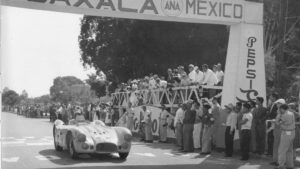
There were 32 contestants on that first edition of the Panamericana Race, most of which were of Mexican and North American origin. The winner was the Oldsmobile of American racer Hershel McGriff and co-pilot Ray Elliot.
Soon afterwards the race started to attract all of the big European manufacturers such as Mercedes, Porsche, Lancia, Ferrari or Maserati, as well as the great drivers of the Old Continent. On the second year (1951), some technical modifications were permitted on the vehicles so as to enhance their performance.
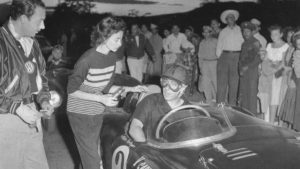
The level and success of The Pana just carried on growing. Soon the best drivers, such as five-time F1 champion Juan Manuel Fangio, Alberto Ascari, Phil Hill or Piero Taruffi, felt tempted by the challenge. It was Taruffi itself who won the 1951 edition and Fangio would do the same two years after that.
The Golden Age of the Panamericana Race, however, ended abruptly in 1955. On the 11th of June tragedy struck with the fatal accident at the 24 Hours of Le Mans. As a result, the organisers of La Pana decided to cancel the event.
History of The Panamericana Race: Modern Age
34 years later, a number of fans of the Central American race organized by Pedro Davila and Eduardo de Leon, managed to give the Panamericana Race a second chance, and got the race up un running once again. The organisers invited all the main automobile clubs in the world and had a great response.

All participating vehicles were classical cars belonging to the Golden Age of the 50’s, and were divided into four groups and nine different categories. The first race of the Modern Age took place in 1988 and was won by Mexican driver and co-pilot Eduardo Morales and Gael Rodriguez.
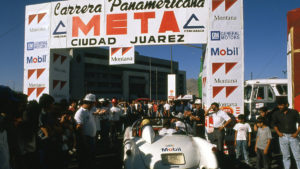
From that year on, the Panamericana race’s popularity hasn’t stopped growing. Speed-passionate fans flock to watch it every year along its long circuit and across its many towns and villages, hoping to get a glimpse of their favorite drivers in the flesh.
Pictures: Organisation of the Panamericana Race



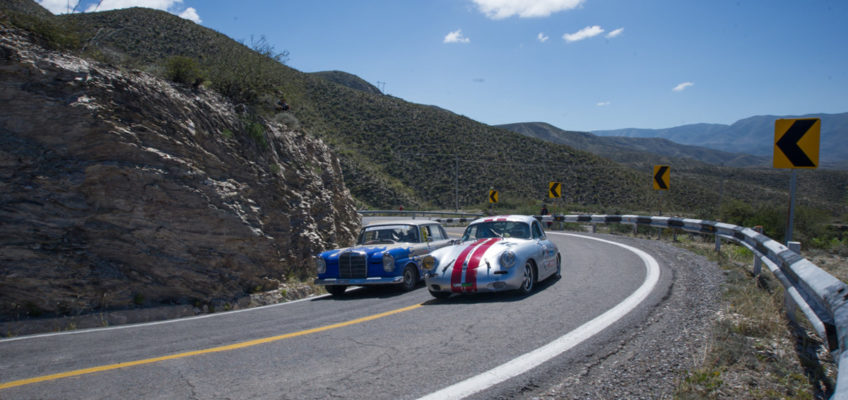

Leave a Reply